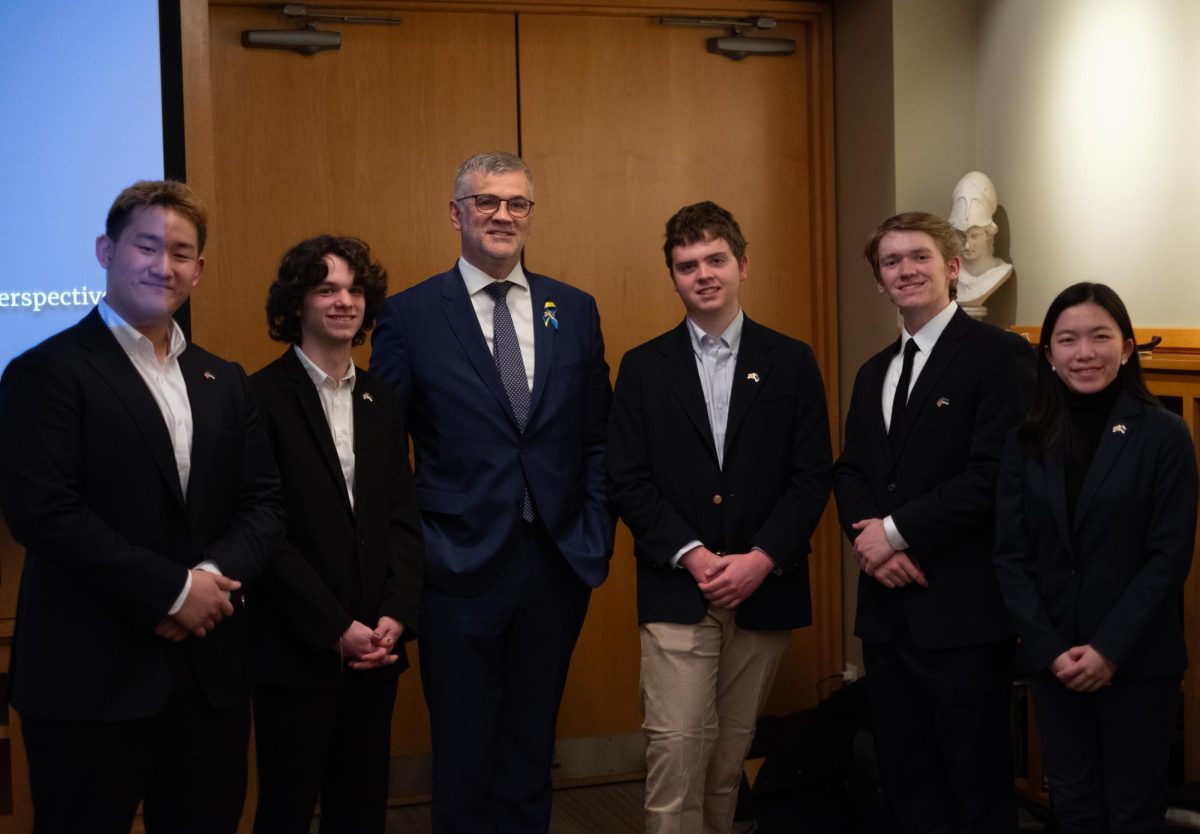Carleton will host its Fall Term Blood Drive on Oct. 28 and 29. The drive, coordinated every term by the Health and Belonging cohort of the college’s Center for Community and Civic Engagement (CCCE), will be run by the Red Cross and take place in the Great Hall. Although the exact number of donors varies each term depending on Red Cross staffing and drive length, the CCCE is hopeful that approximately 50 people will be able to donate each day for a total capacity of 100 pints of blood.
Individuals who have donated in the past and those for whom this is their first time are welcome at the Blood Drive. To donate, students can follow links distributed through campus announcements to the Red Cross website, where they can select a location and sign up for a slot that works with their schedule. Students are then prompted to fill out a short survey on their medical history, as there are certain conditions and medications that cause people to be ineligible to donate. The more that students complete the surveys online, the process when they go to actually donate will be more efficient.
Until 2023, the U.S. Food and Drug Administration and Red Cross had specific guidelines for what they termed “men who have sex with men” (MSM) which prevented blood donation for at least one year after prior sexual activity for individuals who met certain criteria. In response, Carleton has been running a Proxy Donation Campaign which allows individuals to donate blood while raising awareness for the injustice of this policy. Under the current guidelines, people of all genders answer the same screening questions, though there are still some restrictions.
At this year’s drive, there are options to donate blood (all blood types are accepted), but also to just donate plasma, where the red blood cells and platelets are returned to the individual and only the plasma is kept for donation. Plasma-only donation allows one person to give enough plasma for up to three patients at once without harm to the donor. Not all blood types are eligible for plasma-only donation; still individuals with type AB blood are especially encouraged to do so as they are universal plasma donors.
On the day of donation, students can go to the Great Hall where they will be checked in and answer a medical [JUMP] questionnaire from Red Cross staff. Once cleared, a nurse or phlebotomist will begin the donation process.
Although the act of donation takes between 15 and 30 minutes, the CCCE hopes that the rest of the process is as streamlined as possible. “We know people want to help, but we don’t want to take too much time out of their day,” said Brian Caplan ’25, a CCCE health and belonging fellow and blood drive program director.
Although the Red Cross brings its own staff for phlebotomy and medical questioning, there are still many ways for students to get involved, through checking people in and helping with event setup or break-down. Volunteers also play an important role in keeping an extra set of eyes on first-time donors to make sure they are feeling well during the process. In the past, some students have acquired the appropriate Red Cross certifications and training to participate more directly in the medical aspects of a blood drive.
Volunteering with this and other events run through the Health and Belonging cohort are particularly of interest to pre-health students looking for extracurricular involvement in public health fields.
Blood transfusions are especially important for individuals with trauma injuries or some ongoing health conditions. Regardless of the exact use, Irene Tang ’26, a program lead for the Carleton Blood Drive, explained, “[donations are] a way to save lives. Hospitals are always looking for sources of blood.”
Recent natural disasters, such as the recent hurricanes in Florida and North Carolina, have further emphasized the importance of fully stocked blood banks to help keep communities safe in times of crisis.
The National Marrow Donor Program will also be present at the event, registering interested students to become potential marrow donors in the future. Students swab their mouths and are entered into a national database. Although this program is not affiliated with the Red Cross, the CCCE believes that students who are interested in blood donation are likely the same students who would potentially be interested in marrow donation.
Regardless of how students get involved — whether as donors or as volunteers — their support and participation are essential to the event’s success and continuation. Erica Zweifel, the assistant director for community impact at the CCCE, said that “Engaging in the habits of… donating blood, getting out and being an integral part of the community, has a really positive impact on youth.”









